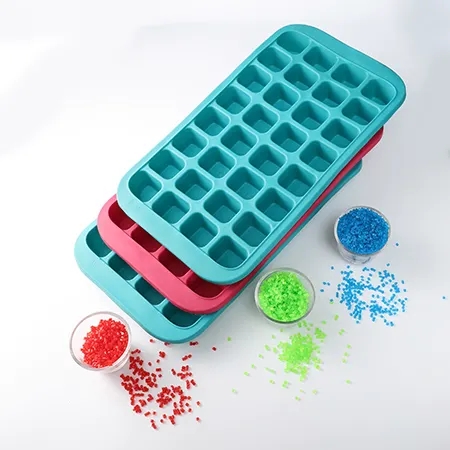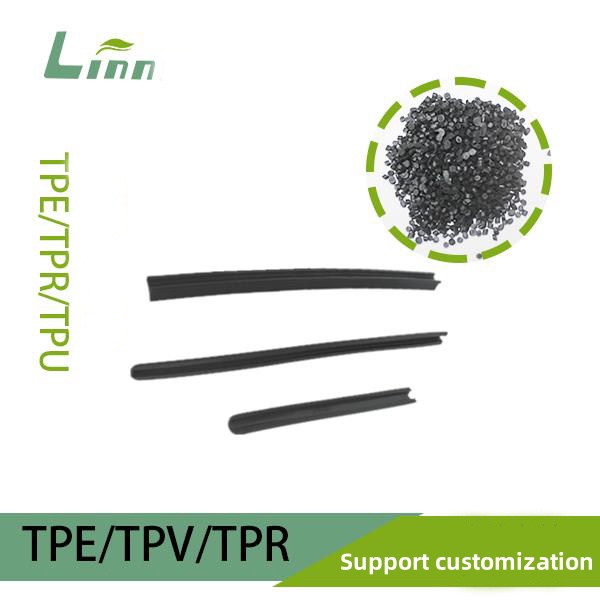Having spent over a decade in the plastics and polymer industry, I’ve encountered my fair share of production mishaps, and one that pops up repeatedly is the accidental mixing of materials like PC (Polycarbonate) and TPE (Thermoplastic Elastomer). Whether it’s due to operator error, poor inventory management, or equipment contamination, this issue can bring production to a screeching halt, waste materials, and drive up costs. If you’re reading this, chances are you’re staring at a batch of mixed PC and TPE, wondering how to salvage it. Don’t worry—I’ve been there, and I’m here to guide you through the process of separating these materials, minimizing losses, and preventing it from happening again. Let’s dive into the nitty-gritty of why this happens, how to fix it, and what you can do to keep your production line running smoothly.

Why Do PC and TPE Get Mixed, and Why Is It a Problem?
PC and TPE are both widely used in industries like automotive, electronics, and medical devices, but they serve very different purposes. PC is a rigid, transparent, and impact-resistant thermoplastic, while TPE is soft, elastic, and often used for flexible components. When these two materials get mixed—say, during injection molding or extrusion—the resulting blend is usually a mess. The mixture compromises the mechanical properties of both materials, leading to defective parts that fail quality checks. For example, PC’s clarity and strength may be ruined by TPE’s softness, while TPE’s elasticity could be lost due to PC’s rigidity.
The mixing typically happens due to:
Human Error: Operators may accidentally load the wrong material into a hopper.
Equipment Contamination: Residual material from a previous run lingers in the machine.
Poor Material Management: Similar-looking PC and TPE pellets get stored together or mislabeled.
Recycling Mishaps: In-house recycling processes may inadvertently combine scraps of different materials.
Separating PC and TPE is challenging because they have different chemical compositions and physical properties, but they’re often processed in similar forms (e.g., pellets). The good news? It’s not impossible. Below, I’ll walk you through practical methods to separate them, based on my own experiences and industry best practices.
Methods to Separate PC and TPE
Separating mixed PC and TPE requires leveraging their distinct physical and chemical properties, such as density, melting point, or solubility. Here are the most effective methods I’ve used or seen in action, along with their pros and cons.

1. Density-Based Separation (Float-Sink Method)
One of the most accessible ways to separate PC and TPE is by exploiting their density differences. PC typically has a density of around 1.20 g/cm³, while TPE densities varies but is often lower, ranging from 0.89 to 1.10 g/cm³, depending on the specific grade.
How It Works:
Place the mixed pellets in a liquid with a density between that of PC and TPE (e.g., a water-alcohol mixture with a density of ~1.15 g/cm³). PC, being denser, will sink, while most TPE grades will float. Scoop off the floating TPE and filter out the sunken PC.
Tip: Adjust the liquid density by tweaking the water-to-alcohol ratio. Always test a small batch first to confirm separation efficiency.
Equipment Needed:
A large container, water, isopropyl alcohol, a mixing tool, and a filtration system.
Best For:
Large batches of mixed pellets with noticeable density differences.
2. Melting Point-Based Separation
PC and TPE also differ in their melting points. PC melts at around 230-260°C, while TPE typically melts at 150-200°C, depending on the formulation. This difference can be used to separate them in a controlled heating process.
How It Works:
Heat the mixed material to a temperature just above the TPE’s melting point but below PC’s (e.g., 210°C). The TPE will melt into a viscous liquid, while PC remains solid. Filter or centrifuge the mixture to separate the molten TPE from the solid PC. Cool the TPE to resolidify it for reuse.
Caution: Overheating can degrade either material, so precise temperature control is critical.
Equipment Needed:
A heated extruder or melt filtration system, temperature controllers, and a centrifuge (optional).
Best For:
Smaller batches or when density-based separation isn’t viable due to similar densities grades.

3. Manual Sorting (Visual or Tactile)
If the mixed batch is small or the materials are visually distinct (e.g., different colors or textures), manual sorting can be a quick fix. PC pellets are typically harder and glossier, while TPE pellets feel softer and may have a slightly rubbery texture.
How It Works:
Spread the pellets on a clean surface and sort them by hand or with tweezers, relying on visual or tactile cues. For larger quantities, use a conveyor belt with trained operators to speed up the process.
Tip: Magnifying glasses or UV lighting can help if the pellets look similar.
Equipment Needed:
A clean workspace, good lighting, and basic tools like tweezers.
Best For:
Small batches or when high-tech equipment isn’t available.
4. Electrostatic Separation
For more advanced setups, electrostatic separation can be effective, especially for pelletized materials. PC and TPE respond differently to electrostatic charges due to their distinct molecular structures.
How It Works:
Feed the mixed pellets into an electrostatic separator, which charges the materials and sorts them based on their attraction to oppositely charged plates. PC, being more polar, behaves differently than TPE, allowing separation.
Note: This method requires specialized equipment and may need calibration for specific TPE grades.
Equipment Needed:
An electrostatic separator, typically found in recycling facilities.
Best For:
Large-scale operations or recycling plants handling mixed plastics.

5. Chemical Solubility-Based Separation
In rare cases, you can use chemical solubility to separate PC and TPE. PC is soluble in solvents like dichloromethane, while most TPE grades are resistant to these solvents.
How It Works:
Dissolve the mixed material in a solvent that targets PC but not TPE. Filter out the undissolved TPE, then recover the PC by evaporating the solvent. This method is complex and requires strict safety protocols due to the use of hazardous chemicals.
Warning: Only attempt this in a controlled lab environment with proper ventilation and waste disposal systems.
Equipment Needed:
A fume hood, chemical-resistant containers, filtration systems, and solvent recovery equipment.
Best For:
Research settings or when other methods fail, and material recovery is critical.
Comparison Table: PC and TPE Separation Methods
To help you choose the best method for your situation, here’s a table comparing the separation techniques:
|
Method |
Applicable Scenarios |
Advantages |
Disadvantages |
Cost & Complexity |
|---|---|---|---|---|
|
Density-Based (Float-Sink) |
Large batches, distinct densities grades |
Simple, low-cost, scalable |
Limited by similar densities grades |
Low, simple |
|
Melting Point-Based |
Small batches, clear melting point gap |
Effective for distinct materials |
Risk of material degradation, equipment needed |
Moderate, technical |
|
Manual Sorting |
Small batches, visually distinct materials |
No special equipment, immediate |
Labor-intensive, impractical for large batches |
Low, labor-heavy |
|
Electrostatic Separation |
Large-scale, recycling facilities |
High precision, automated |
Expensive equipment, requires expertise |
High, specialized |
|
Chemical Solubility |
Lab settings, high-value materials |
Highly selective |
Hazardous, complex, costly |
Very high, hazardous |
Preventing PC and TPE Mixing in the Future
While separating mixed PC and TPE is doable, prevention is always the better strategy. Here are some practical steps I’ve implemented in production facilities to avoid this issue:
Improve Material Labeling
Use clear, color-coded labels for PC and TPE storage bins and hoppers. Include material specs (e.g., density, melting point) on labels to avoid confusion.
Segregate Storage Areas
Store PC and TPE in separate, clearly marked zones to prevent accidental mixing during handling.
Purge Equipment Thoroughly
Before switching materials in an extruder or injection molding machine, run a purging compound to clear residual material. Refer to purging guidelines from sources like Plastics Technology.
Train Operators
Conduct regular training to ensure staff understand the differences between PC and TPE and follow strict material-handling protocols.
Implement Quality Checks
Use inline sensors or visual inspections to detect material mix-ups early in the production process. For example, near-infrared (NIR) spectroscopy can identify material types in real-time.
Audit Recycling Processes
If you recycle in-house, ensure scraps are sorted by material type before reprocessing. Mixed scraps are a common source of contamination.

Case Study: A Real-World Mix-Up Fix
A couple of years ago, I worked with a consumer electronics manufacturer facing a PC-TPE mix-up. During a production run, an operator mistakenly loaded TPE pellets into a PC hopper, resulting in 500 kg of contaminated material. The defective parts were cloudy and brittle, failing quality tests. Here’s how we tackled it:
We used the float-sink method with a water-alcohol mixture (density ~1.12 g/cm³) to separate the pellets. About 80% of the TPE floated, and 90% of the PC sank, allowing us to recover most of the material.
For the remaining mixed pellets, we resorted to manual sorting under UV light, as the TPE had a slight fluorescence that PC lacked.
To prevent recurrence, we introduced color-coded hoppers, mandatory purging between runs, and operator training on material identification.
This approach saved roughly 85% of the material, minimizing financial losses. The experience taught me the value of combining immediate fixes with long-term process improvements.
FAQs: Common Questions About PC and TPE Separation
To wrap up, I’ve answered some frequently asked questions to address lingering doubts you might have.
Q1: Can mixed PC and TPE be reused without separation?
A: In most cases, no. The blend compromises the properties of both materials, leading to poor performance. However, for low-value applications (e.g., non-critical fillers), the mixture might be usable after testing.
Q2: How do I know if my PC and TPE grades have different densities?
A: Check the Technical Data Sheets (TDS) from your supplier for density values. If unavailable, conduct a small-scale float-sink test with a known liquid density to confirm separation feasibility.
Q3: Is it worth investing in electrostatic separation equipment?
A: For small or medium-sized operations, the cost may outweigh the benefits. It’s more practical for large recycling facilities or plants handling diverse plastics regularly.
Q4: Can I use the separated materials directly in production?
A: Recovered materials should be tested for purity and performance (e.g., tensile strength, clarity) before reuse. Contamination or degradation during separation could affect quality.
Q5: What’s the most common cause of PC-TPE mixing in small factories?
A: In my experience, poor labeling and inadequate equipment purging are the top culprits, especially in facilities with limited automation or training.
Closing Thoughts
Dealing with a PC and TPE mix-up can feel like a nightmare, but with the right approach, you can salvage your materials and get production back on track. Whether you opt for density-based separation, manual sorting, or advanced techniques like electrostatic separation, the key is to act quickly and systematically. More importantly, take steps to prevent future mix-ups by tightening your material management and training processes. I’ve seen firsthand how a little foresight can save a lot of headaches in this industry, and I hope my insights help you navigate this challenge with confidence. If you’re still stuck or have specific questions, feel free to reach out—I’m always happy to share what I’ve learned!





